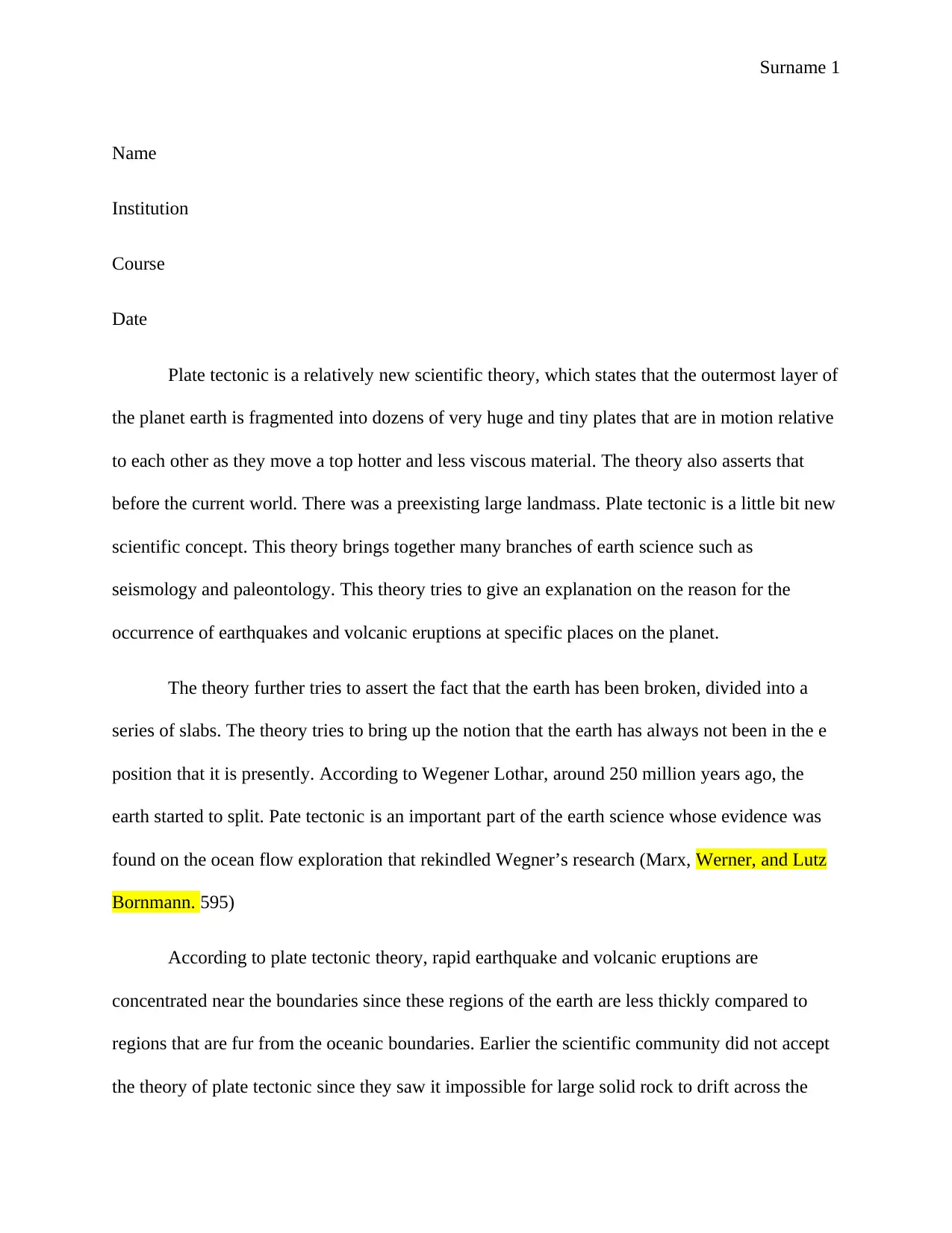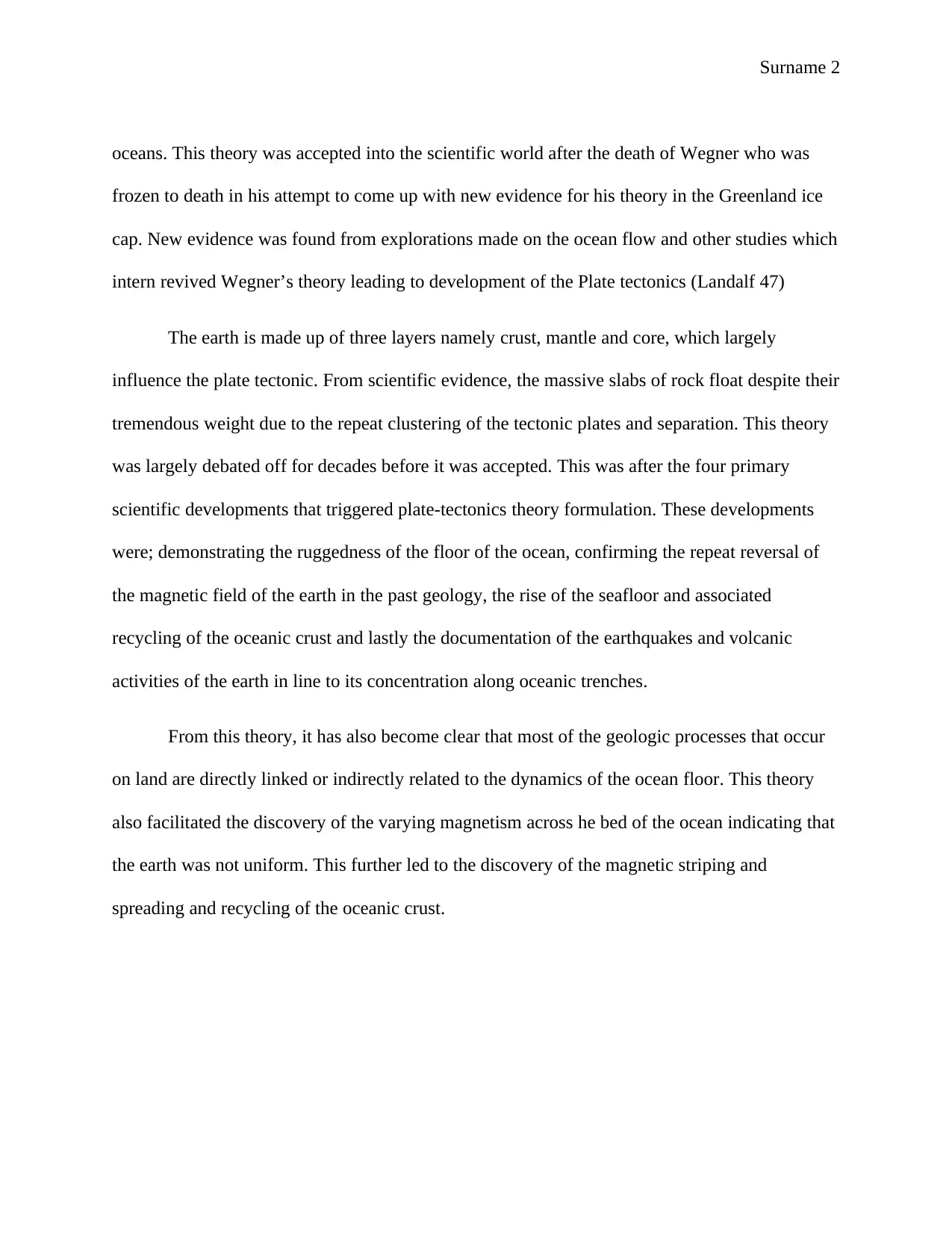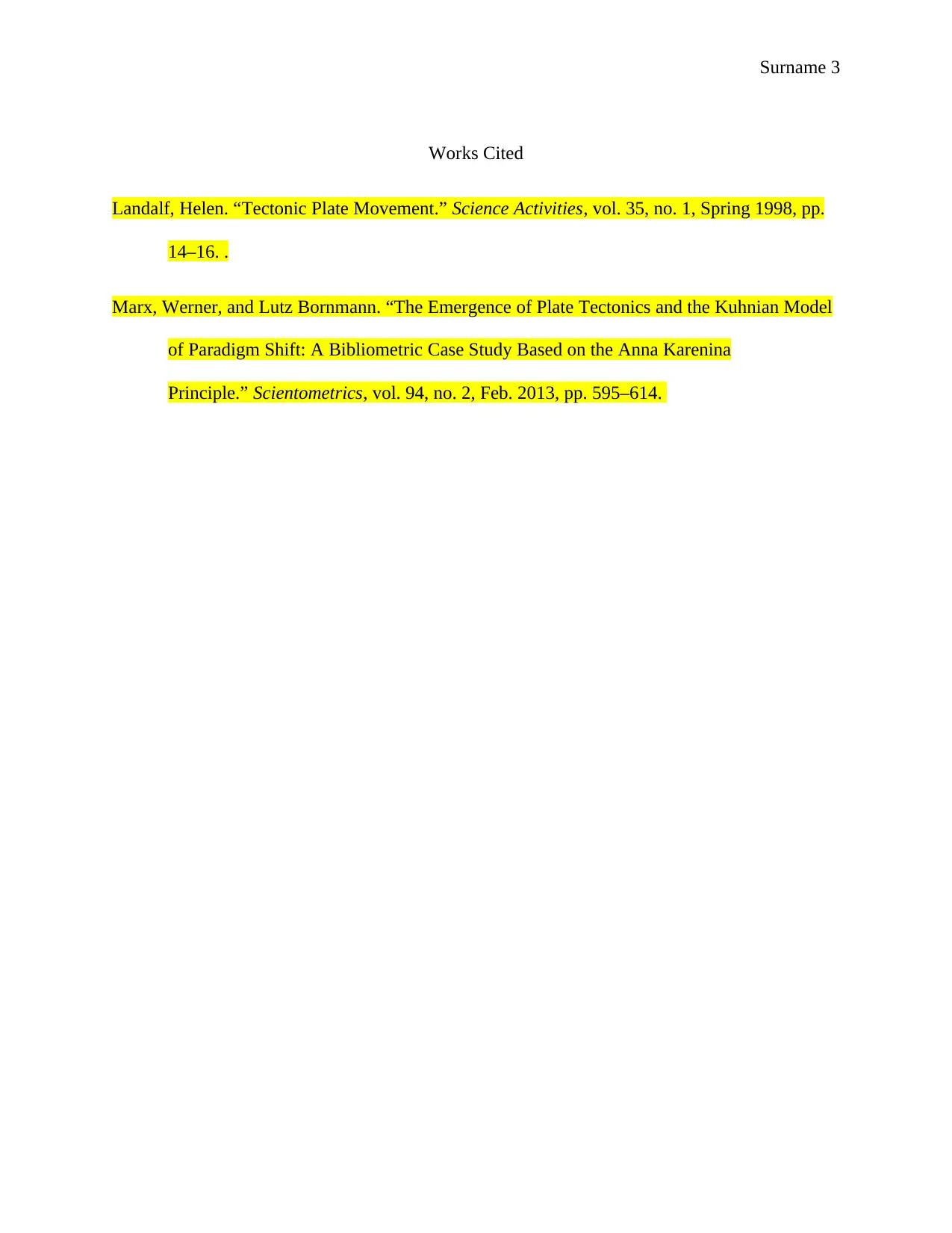Plate Tectonics: Theory, Evidence, and Earth's Structure
VerifiedAdded on 2023/06/03
|3
|650
|457
Essay
AI Summary
This essay provides an overview of the plate tectonics theory, explaining that the earth's outermost layer is fragmented into moving plates. It discusses the theory's role in explaining earthquakes and volcanic eruptions, and its historical development, including Wegener's contributions and the evidence from ocean floor exploration. The essay highlights the earth's structure (crust, mantle, and core) and how these layers influence plate tectonics. It also covers the scientific developments that led to the theory's acceptance, such as the ruggedness of the ocean floor, magnetic field reversals, seafloor spreading, and the correlation between earthquakes and volcanic activity. The essay emphasizes the link between geological processes on land and the dynamics of the ocean floor, including the discovery of magnetic striping and the recycling of the oceanic crust. The essay also includes citations from scientific literature.
1 out of 3






![[object Object]](/_next/static/media/star-bottom.7253800d.svg)